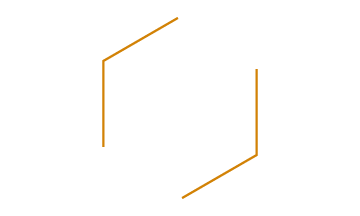Author Note
Ben Castleman and Ron Haskins coordinated
the first draft and revisions to the authors’ original
text. Others provided the first drafts of the
following sections: Creation of a “Quality Child
Care and Pre-K Genie” (Rebecca Maynard and
Philip Sirinides), Nationwide Implementation
of FAFSA Completion Assistance Program (Jon
Baron), Saving Students Money on Student Loan
Repayment (Beth Akers with Ben Castleman),
and Streamlining and Framing Borrowers’
Income-Driven Repayment Decisions (Susan
Dynarski, Damon Jones, Benjamin Keys, and
Jonathan Zinman).
Author Affiliation
The authors were members of the BSPA Working
group on Education.
Castleman: University of Virginia. Haskins:
Brookings Institution. Akers: Manhattan Institute.
Baron: Laura and John Arnold Foundation.
Dynarski: University of Michigan. Farran: Vanderbilt
University. Feldman: Brookings Institution.
Jones and Keys: University of Chicago. Maynard
and Sirinides: University of Pennsylvania. Zinman:
Dartmouth University. Corresponding author’s
e-mail: [email protected].
References
1. Fernald, A., Marchman, V. A., &
Weisleder, A. (2013). SES differences
in language processing skill and
vocabulary are evident at 18 months.
Developmental Science, 16, 234–248.
2. Hart, B., & Risley, T. (1995). Meaningful
differences in the everyday experiences
of young American children. Baltimore,
MD: Brookes.
3. York, B. N., & Loeb, S. (2014). One step
at a time: The effects of an early literacy
text messaging program for parents of
preschoolers (NBER Working Paper No.
20659). Cambridge, MA: National Bureau
of Economic Research.
4. Bergman, P. (2013). Parent-child
information frictions and human
capital investment: Evidence from
a field experiment. Retrieved from
http://www.columbia.edu/~psb2101/
BergmanSubmission.pdf
5. Hurwitz, M., Smith, J., Niu, S., &
Howell, J. (2014). The Maine question:
How is 4-year college enrollment
affected by mandatory college
entrance exams? Education Evaluation
and Policy Analysis, 37, 138–159.
doi:10.3102/0162373714521866
6. Bettinger, E. P., Long, B. T., Oreopoulos,
P., & Sanbonmatsu, L. (2012). The role of
application assistance and information
in college decisions: Results from the
H&R Block FAFSA experiment. Quarterly
Journal of Economics, 127, 1205–1242.
7. Castleman, B. L., & Page, L. (2016).
Freshman year financial aid nudges: An
experiment to increase FAFSA renewal
and college persistence. Journal of
Human Resources, 51, 389–415.
8. Subcommittee on the Social and
Behavioral Sciences Team. (2015). Social
and Behavioral Sciences Team annual
report. Washington, DC: Executive Office
of the President, National Science and
Technology Council, Office of Science
and Technology Policy.
9. Mabel, Z., & Britton, T. A. (2016). Leaving
late: Understanding the extent and
predictors of late college departure.
Retrieved from https://scholar.
harvard.edu/zmabel/publications/
leaving-late-understanding-extent-andpredictors-
college-late-departure
10. Cascio, E. U., & Schanzenbach, D. W.
(2013). The impacts of expanding access
to high-quality preschool education
(NBER Working Paper No. 19735).
Cambridge, MA: National Bureau of
Economic Research.
11. Bassok, D., Markowitz, A. J., Player, D.,
& Zagardo, M. (2017). Do parents know
“high quality” preschool when they see
it? (EdPolicyWorks Working Paper No.
54). Charlottesville, VA: EdPolicyWorks.
12. Hastings, J. S., & Weinstein, J. M.
(2008). Information, school choice, and
academic achievement: Evidence from
two experiments. The Quarterly Journal
of Economics, 123, 1373–1411.
13. U.S. Department of Education, National
Center for Education Statistics. (2012).
Table 376. Percentage of first-time
full-time bachelor’s degree–seeking
students at 4-year institutions who
completed a bachelor’s degree, by race/
ethnicity, time to completion, sex, and
control of institution: Selected cohort
entry years, 1996 through 2005. Digest
of Education Statistics, 2012. Retrieved
from https://nces.ed.gov/programs/
digest/d12/tables/dt12_376.asp
14. Casey, B., Jones, R. M., & Somerville, L.
H. (2011). Braking and accelerating of the
adolescent brain. Journal of Research
on Adolescence, 21, 21–33.
15. Thaler, R. H., & Benartzi, S. (2004). Save
More Tomorrow: Using behavioral
economics to increase employee saving.
The Journal of Political Economy, 112,
164–187.
16. Bound, J., Lovenheim, M. F., & Turner, S.
(2012). Increasing time to baccalaureate
degree in the United States. Education
Finance and Policy, 7, 375–424.
17. Mitchell, T. (2016, April 4). A new vision
for serving student loan borrowers
[Blog post]. Retrieved from https://
blog.ed.gov/2016/04/a-new-vision-forserving-
student-loan-borrowers/
18. Fryer, R. G., Levitt, S. D., List, J., & Sadoff,
S. (2012). Enhancing the efficacy of
teacher incentives through loss aversion:
A field experiment (NBER Working Paper
No. 18237). Cambridge, MA: National
Bureau of Economic Research.
19. Levitt, S. D., List, J. A., Neckermann, S.,
& Sadoff, S. (2012). The behavioralist
goes to school: Leveraging behavioral
economics to improve educational
performance (NBER Discussion Paper
No. 18165). Cambridge, MA: National
Bureau of Economic Research.
20. Alcott, H. (2011). Social norms and
energy conservation. Journal of Public
Economics, 95, 1082–1095.
21. Walton, G. M., & Cohen, J. L. (2011,
March 18). A brief social-belonging
intervention improves academic and
health outcomes of minority students.
Science, 331, 1447–1451.
22. Destin, M., & Oyserman, D. (2010).
Incentivizing education: Seeing
schoolwork as an investment, not a
chore. Journal of Experimental Social
Psychology, 46, 846–849. doi:10.1016/j.
jesp.2010.04.004
23. Schippers, M. C., Scheepers, A. W. A., &
Peterson, J. B. (2015). A scalable goalsetting
intervention closes both the
gender and ethnic minority achievement
gap. Palgrave Communications, 1, Article
15014. doi:10.1057/palcomms.2015.14
24. Internal Revenue Service. (2012).
Automated IRS system helps collegebound
students with financial aid
application process: Special Edition Tax
Tip 2012-08. Retrieved from https://
www.irs.gov/uac/automated-irs-systemhelps-
college-bound-students-withfinancial-
aid-application-process
